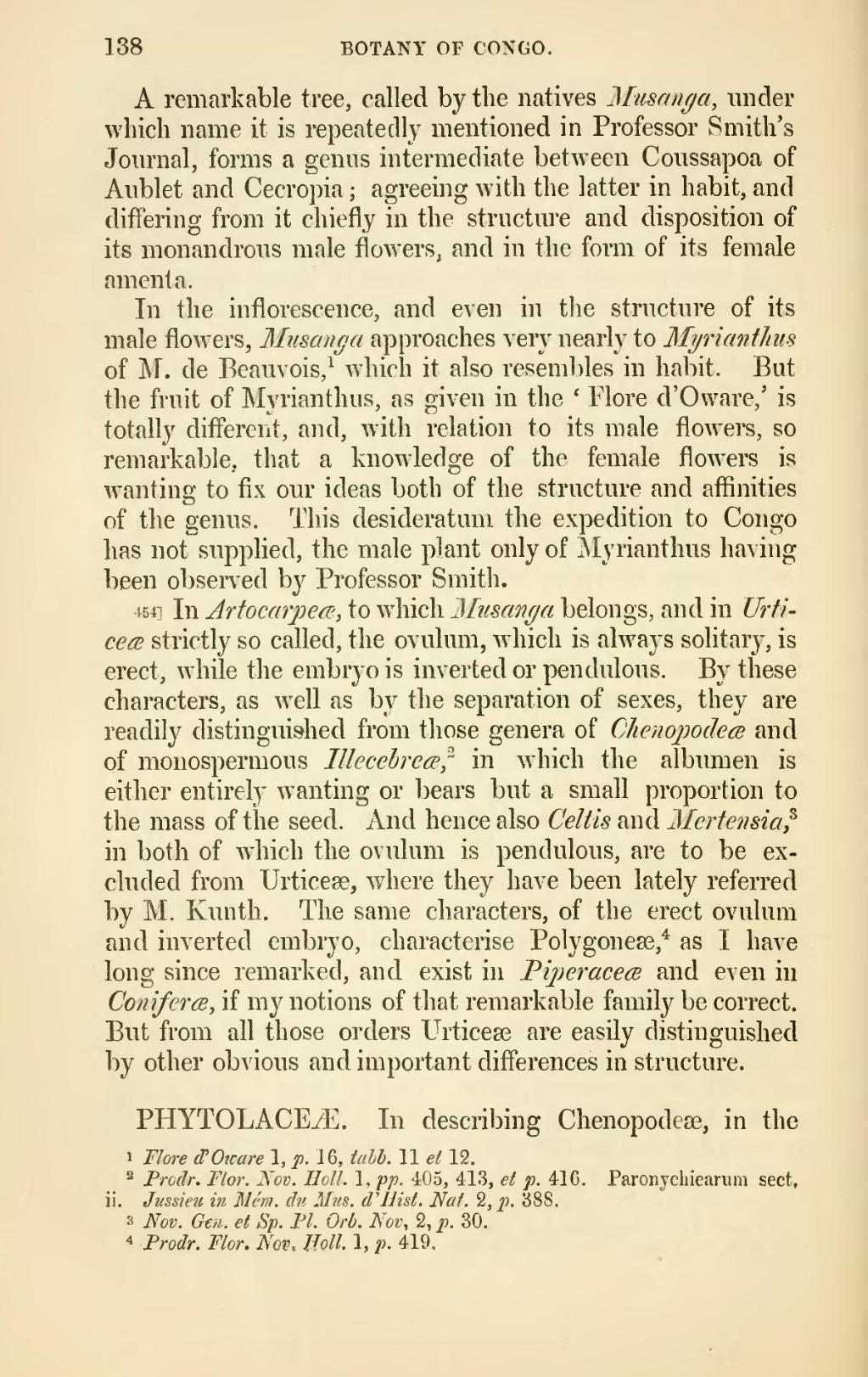138 BOTANY OF CONGO.
A remarkable tree, called by the natives Musanga, under which name it is repeatedly mentioned in Professor Smith's Jonrnal, forms a genus intermediate between Coussapoa of Aublet and Cecropia; agreeing with the latter in habit, and differing from it chiefly in the structure and disposition of its monandrous male flowers, and in the form of its female amenta.
In the inflorescence, and even in the structure of its male flowers, Musanga approaches very nearly to Myrianthus of M. de Beauvois,[1] which it also resembles in habit. But the fruit of Myrianthus, as given in the 'Flore d'Oware,' is totally different, and, with relation to its male flowers, so remarkable, that a knowledge of the female flowers is wanting to fix our ideas both of the structure and affinities of the genus. This desideratum the expedition to Congo has not supplied, the male plant only of Myrianthus having been observed by Professor Smith.
454] In Artocarpeæ, to which Musanga belongs, and in Urticeœ strictly so called, the ovulum, which is always solitary, is erect, while the embryo is inverted or pendulous. By these characters, as well as by the separation of sexes, they are readily distinguished from those genera of Chenopodeœ and of monospermous Illecebreæ,[2] in which the albumen is either entirely wanting or bears but a small proportion to the mass of the seed. And hence also Celtis and Mertensia,[3] in both of which the ovulum is pendulous, are to be excluded from Urticeæ, where they have been lately referred by M. Kunth. The same characters, of the erect ovulum and inverted embryo, characterise Polygoneæ,[4] as I have long since remarked, and exist in Piperaceæ and even in Comferæ, if my notions of that remarkable family be correct. But from all those orders Urticeæ are easily distinguished by other obvious and important differences in structure.
Phytolaceæ. In describing Chenopodeæ, in the
